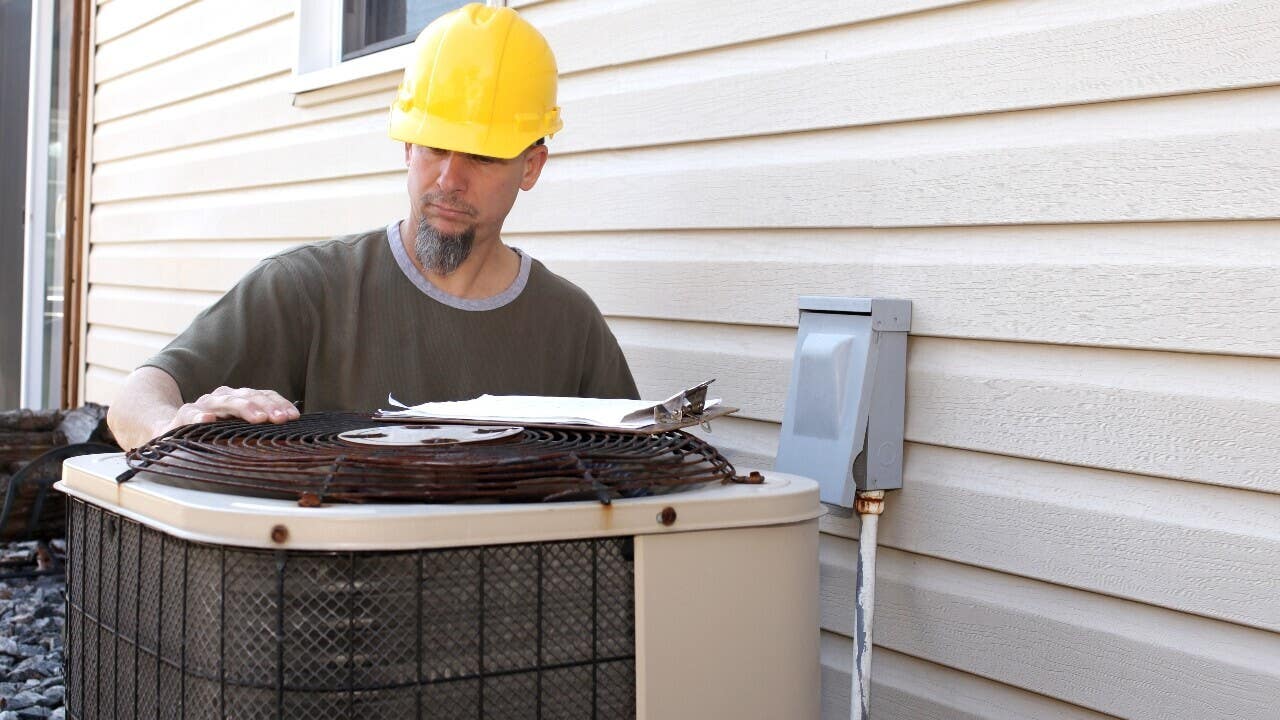VA renovation loans: Buying and fixing up a home with one loan

The Bankrate promise
At Bankrate we strive to help you make smarter financial decisions. While we adhere to strict , this post may contain references to products from our partners. Here's an explanation for .
Key takeaways
- A VA rehab loan allows you to buy and renovate a house with one loan using your VA benefit.
- Many mortgage lenders offer VA loans, but not all offer VA renovation loans.
- You can only use a VA rehab loan to make safety and accessibility improvements to a primary residence, not cosmetic upgrades. You can't use the loan for an investment property or second home.
Buying a home that needs TLC is often cheaper, but covering repair costs out of pocket can be challenging. If you’re a member of the military or served in the past, you might be eligible for a special type of VA loan to help you buy and repair a fixer-upper. Here’s an overview.
What is a VA renovation loan?
A VA renovation loan is a type of VA home loan that finances both the home you’re looking to purchase and the cost of home improvements and repairs. It also allows you to refinance and fix up your current home.
Like all VA loans, VA home renovation loans are guaranteed by the U.S. Department of Veterans Affairs and only available to those serving in the military or have been honorably discharged, plus eligible surviving spouses.
Notably, you can only use VA loans for your primary residence, not an investment or vacation property.
Many lenders offer VA loans, but not all VA lenders offer VA renovation loans.
How do VA rehab and renovation loans work?
VA rehab loans work similarly to a regular VA loan, but with a few more steps.
For one, you’ll need to get project estimates from a VA-approved contractor and submit these to your lender. If not already, the contractor has to be registered with the VA. Confirm the contractor’s licensing and insurance before signing any agreements.
A VA appraiser then needs to determine the after-renovation value of the home. You can only use the loan to finance up to the amount the appraiser believes the home will be worth after the reno, or the total cost of the home purchase plus the estimate from the contractor, whichever amount is lower.
Along with estimating the value of the home, the appraiser will recommend which improvements to make.
The work has to be completed within 120 days (four months) of closing. From there, the process works much like a regular construction loan: The lender will disburse the funds as the project progresses, and an inspector will check in on the project at various points.
Importantly, you can’t use a VA renovation loan to make cosmetic upgrades. Rather, it’s designed for repairs that enhance the home’s accessibility, functionality and safety, such as installing a new HVAC or mold remediation.
How is a VA home renovation loan different from a VA loan?
For the most part, a VA home renovation loan follows the same process and as getting a VA home loan. However, there are some key differences:
- Loan use: A VA home renovation loan allows you to finance the purchase of the home and repairs (or refinance and do repairs). A regular VA loan can only be used to purchase a home or refinance.
- More hoops: To get a VA rehab loan, the renovations have to be completed by an approved contractor. A VA appraiser also has to sign off on the project.
- Restrictions: With a VA renovation loan, you can only finance repairs up to the amount estimated by the contractor or the after-renovation value determined by the appraiser, whichever is less. Your lender might also impose its own limits, such as the home’s price plus no more than $50,000 for renovations. In contrast, if you have full entitlement, the VA doesn’t set limits on standard VA loans.
VA renovation loan requirements
To be eligible for any VA loan, including a rehab loan, you’ll need to meet military service requirements, as well as have a certificate of eligibility (COE).
You won’t need to make a down payment nor pay mortgage insurance, but you’ll be responsible for the VA funding fee.
Remember, too: You can only use a VA loan to finance a primary residence, or a home you live in or intend to live in.
For a VA rehab loan specifically, your contractor needs to finish the repair work within 120 days of closing of the loan.
As noted, you can only use a VA renovation loan to finance non-cosmetic upgrades. This includes:
Acceptable renovations for VA rehab loans
- HVAC or plumbing upgrades
- New insulation
- Mold remediation
- Weatherization
- Repairing or replacing flooring
- Removing lead paint
- Adding a ramp for wheelchairs or other accessibility improvements
- Repairing or replacing a roof or gutters
How to get a VA rehab loan
Here’s an overview of the process to get a VA rehab loan:
- Get your COE. You can obtain this yourself from the VA eBenefits portal online or by mailing the VA COE request form to the appropriate regional loan center.
- Find a VA rehab lender. While there are major lenders that specialize in VA loans, many banks do as well. Not all VA lenders offer VA rehab loans, however, so shop around.
- Get preapproved. Once you have a short list of VA renovation lenders, request a preapproval so you can compare rates specific to your situation. While a preapproval isn’t a firm commitment from the lender, you’ll need this proof of financing to make offers on homes.
- Schedule an appraisal and submit project estimates and details. You can’t get a VA rehab loan until your lender approves the renovations. Once a seller accepts your offer, your lender will order an appraisal to determine the value of the home and repairs. You’ll also provide your lender with the contractor estimates.
- Complete inspections. Over the course of the project’s timeline, an inspector will evaluate the work. Remember: The project should be completed within 120 days of the day you closed the loan.
Pros and cons of VA renovation loans
Expanding your home search to fixer-uppers can help you find a home quicker, but some sellers might not be willing to wait or deal with the hassle of a VA rehab loan. Keep these other pros and cons of VA renovation loans in mind:
Pros
- You’ll finance the purchase and repair (or refinance and repair) of a home with one loan, avoiding two sets of closing costs.
- In general, you won’t pay as much for a fixer-upper compared to a move-in ready home.
- Rolling repair costs into your mortgage can be cheaper than financing renovations with a credit card or home improvement loan.
- You don’t need to make a down payment.
Cons
- It can be challenging to find a VA renovation lender and/or a VA-approved contractor.
- You can only use VA renovation loans for livability repairs, not cosmetic improvements.
- You can’t use this type of loan for an investment property or vacation home — only primary residences you live in.
- If the repairs end up costing more than the appraised value of the home, you’ll need to pay the difference out of pocket or with another type of loan.
Alternatives to VA rehab loans
Finding a mortgage lender that offers a VA home renovation loan can be challenging, so if you’re struggling to find one, consider one of these alternatives:
- 203(k) loan: This type of FHA loan only requires 3.5 percent down and can help you pay for both the home and the cost of upgrades. Unlike a VA renovation loan, the amount you can finance is capped at 110 percent of the appraised value of the home (the lesser of the “before” or “after” reno value), and you’ll need to pay FHA mortgage insurance. However, the work can take as long as six months to complete, if needed.
- VA Energy Efficient Mortgage: These specialized loans help cover the cost of energy-efficient home improvements, such as solar heating and cooling, weatherization, heat pumps and other renovations.
- HomeStyle loan: A type of conventional loan, Fannie Mae’s HomeStyle loan allows you to buy and fix up a property, with the amount of financing limited to 75 percent of the “after” appraised value. Notably, you can use this type of loan for investment properties or second homes.
- VA construction loan: This is similar to a regular construction loan, but might be easier to qualify for if you’re an eligible service member.
- Home equity line of credit (HELOC) or home equity loan: If you already own a home, have some equity and want to make repairs, you can get a HELOC or home equity loan worth up to 80 percent (sometimes more) of your home’s value.
FAQ
-
Like regular VA loans, closing costs on a VA loan are typically between 1 percent and 6 percent of the loan amount and include a one-time funding fee. The funding fee amount varies between 1.25 percent and 3.3 percent.
-
You can choose your own contractor for the renovations, but the contractor must be registered with the VA and have a valid VA Builder ID.
Related Articles



What is a VA construction loan, and should you use it to build a home?
